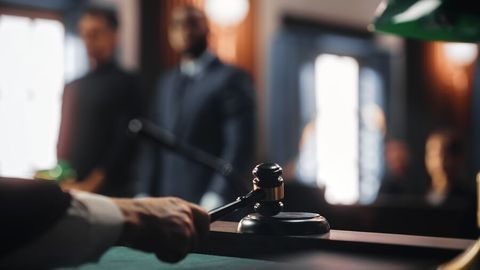A Common-Sense Change to the Continuous SAM Registration Requirement at FAR 52.204 7
Client Alert | 1 min read | 11.08.24
On November 12, 2024, the Department of Defense (DoD), General Services Administration (GSA), and National Aeronautics and Space Administration (NASA) will issue an interim rule amending FAR 52.204-7 to clarify that an offeror’s failure to maintain System for Award Management (SAM) registration during the period between proposal submission and contract award does not render the offeror ineligible for award. Providing welcome relief to agencies and contractors alike, the interim rule requires only that an offeror be registered in SAM at the time of offer submission and at the time of contract award.
The interim rule comes in response to Court of Federal Claims (COFC) and GAO decisions that have strictly enforced the language of FAR 52.204-7 stating that “[a]n Offeror is required to be registered in SAM when submitting an offer or quotation and shall continue to be registered until time of award” and required contractors to maintain active SAM registration throughout the entire proposal and evaluation process. The COFC and GAO interpretation has been particularly frustrating for contractors and agencies due to the relatively draconian outcomes, such as rendering an offeror ineligible due to a single-day SAM registration lapse (at no fault of the offeror). Likewise, the COFC and GAO have prevented agencies from using discussions or corrective action to cure offerors’ SAM registration lapses, resulting in wasted resources for otherwise successful contractors, agencies losing best-value providers, and delays in mission execution.
The interim rule is effective upon publication on November 12, 2024, and will provide immediate relief to the procurement community. Interested parties have 60 days to provide comments before DoD, GSA, and NASA formulate the final rule. Crowell will continue to closely monitor regulatory and caselaw developments in this space.
Contacts
Insights
Client Alert | 6 min read | 11.26.25
From ‘Second’ to ‘First:’ Federal Circuit Tackles Obvious Claim Errors
Patent claims must be clear and definite, as they set the boundaries of the patentee’s rights. Occasionally, however, claim language contains errors, such as typographical mistakes or incorrect numbering. Courts possess very limited authority to correct such errors. The United States Court of Appeals for the Federal Circuit has emphasized that judicial correction is appropriate only in rare circumstances, where (1) the error is evident from the face of the patent, and (2) the proposed correction is the sole reasonable interpretation in view of the claim language, specification, and prosecution history. See Group One, Ltd. v. Hallmark Cards, Inc., 407 F.3d 1297, 1303 (Fed. Cir. 2005) and Novo Indus., L.P. v. Micro Molds Corp., 350 F.3d 1348, 1357 (Fed. Cir. 2003).
Client Alert | 5 min read | 11.26.25
Client Alert | 6 min read | 11.25.25
Brussels Court Clarifies the EU’s SPC Manufacturing Waiver Regulation Rules
Client Alert | 3 min read | 11.24.25








